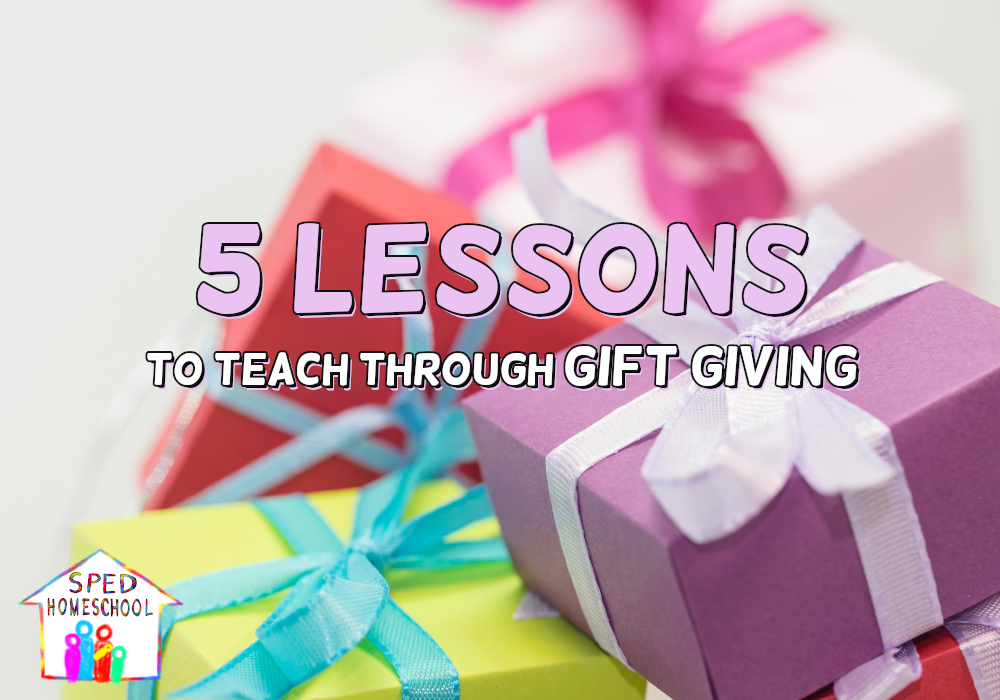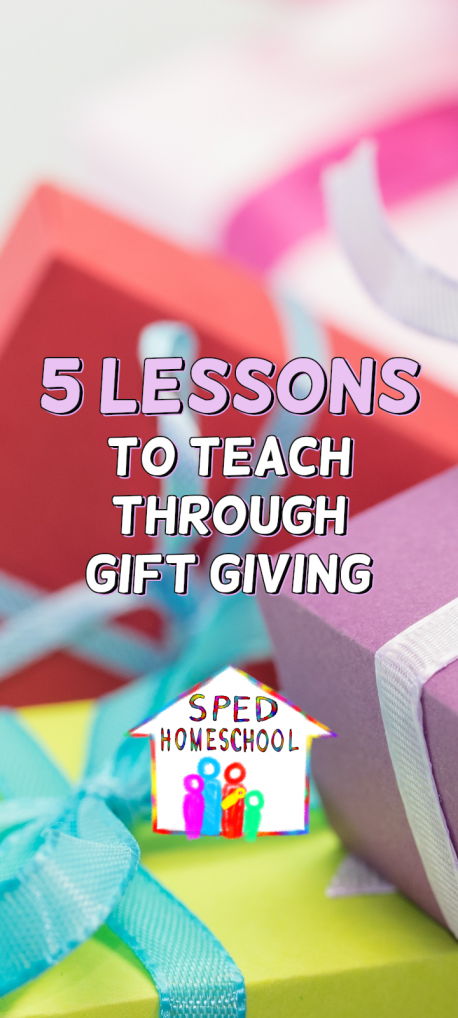
Many struggling learners or students with special needs struggle with time, money, and egocentric behavior. Gift giving can easily be a time of educational and emotional opportunities for growth, and Christmas is the perfect time to put some of these tips into practice. It’s also a very busy time of the year, which makes intentionality important. But if we take the time to slow down and really focus on a few of these areas, there are a variety of lessons we can teach through gift giving
5 Lessons to Teach through Gift Giving
1. Plans and Budgets
There are so many ways to incorporate learning about money into gift giving. The first place to start is making a budget. For younger kids, you can talk about one gift, but for older children, they can set a budget for the whole holiday. You can extend this activity by setting up a savings plan for next year. If we spent $200 on our cousins this year, how much would we need to save all year to have enough money? How much would each gift cost? Will we be able to afford it and what can we change? If you go under budget, how can you use the money to bless someone else?
2. Math with Money
We are quickly becoming a cashless society. Our children need to know how to use cash. Plan ahead and take money to the store. Have your children buy gifts by counting out the correct change. You can further this activity by asking the children to calculate how much change they will receive. Play store at home and teach children how to count back money as a cashier. You can use fake money if needed. Many youths don’t know the valuable skill of counting back money, and it’s impressive to find a cashier that does know this skill!
3. Time Management
Time management is critical when shopping. How long will it take a gift to arrive at the destination? If I order a gift online, how long will it take to arrive? What if Amazon is even late? How far ahead do you need to plan? This doesn’t just apply to online shopping. Do you know how long it takes to walk the length of the mall? Can you estimate drive time, finding a parking spot, locating 7 gifts, waiting in line, and driving back home? Will you eat a meal while shopping or grab a cup of coffee? How do those factors affect your budget? There are a number of time management lessons that we can teach through gift giving.
4. Creative Skills
Giving gifts that don’t cost much – handmade gifts – provide many more lessons! New skills, budget for cooking or craft supplies, deciding what a person would like, are just a few things to be learned when creating gifts. Is it really cheaper if you are buying a lot of supplies? How much time will it take to make the items, and will you be able to finish?
5. Emotional Growth
I recently saw a meme go around Facebook about shopping for yourself while shopping for others. The struggle is real! How many times have you bought a gift for someone else and then one for yourself? Or changed your list? The struggle is real for our kids, too. Sometimes the struggle is that they want the gift for themselves and don’t understand why they can’t’ have it. Other kids struggle with wanting to buy for someone what they want instead of what the other person wants. I know Grandma wants a hat, but can it be pink because pink is my favorite color? Even if Grandma doesn’t ever wear pink? This is the perfect time to teach kids to think outwardly instead of egocentric thinking and behavior. Some kids naturally do think outwardly, but others need specific instructions and loving examples.
Let’s not get so busy this holiday season that we miss the opportunities teach through gift giving to others. The most important lessons are lessons of the heart, which means the most important lessons we teach all year could be those we teach during the holidays.
Looking for more holiday teaching ideas? Check out the SPED Homeschool Christmas and New Year Pinterest boards for great hands-on learning activities you can use all season long.
Did you benefit from this article?
Would you consider a small donation to support the on-going work of SPED Homeschool?
Click Here to Donate Today



